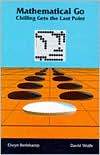Category Books
- Fiction Books & Literature
- Graphic Novels
- Horror
- Mystery & Crime
- Poetry
- Romance Books
- Science Fiction & Fantasy
- Thrillers
- Westerns
- Ages 0-2
- Ages 3-5
- Ages 6-8
- Ages 9-12
- Teens
- Children's Books
- African Americans
- Antiques & Collectibles
- Art, Architecture & Photography
- Bibles & Bible Studies
- Biography
- Business Books
- Christianity
- Computer Books & Technology Books
- Cookbooks, Food & Wine
- Crafts & Hobbies Books
- Education & Teaching
- Engineering
- Entertainment
- Foreign Languages
- Game Books
- Gay & Lesbian
- Health Books, Diet & Fitness Books
- History
- Home & Garden
- Humor Books
- Judaism & Judaica
- Law
- Medical Books
- New Age & Spirituality
- Nonfiction
- Parenting & Family
- Pets
- Philosophy
- Political Books & Current Events Books
- Psychology & Psychotherapy
- Reference
- Religion Books
- Science & Nature
- Self Improvement
- Sex & Relationships
- Social Sciences
- Sports & Adventure
- Study Guides & Test Prep
- Travel
- True Crime
- Weddings
- Women's Studies
Mathematical Go: Chilling Gets the Last Point »

Authors: Elwyn R. Berlekamp, David Wolfe
ISBN-13: 9781568810324, ISBN-10: 1568810326
Format: Hardcover
Publisher: CRC Press
Date Published: January 1994
Edition: (Non-applicable)
Author Biography: Elwyn R. Berlekamp
Book Synopsis
The ancient game of Go is one of the less obvious candidates for mathematical analysis. With the development of new concepts in combinatorial game theory, the authors have been able to analyze Go games and find solutions to real endgame problems that have stumped professional Go players. Go players with an interest in mathematics and mathematicians who work in game theory will not want to miss this book because it describes substantial connections between the two subjects that have been, until now, largely unrecognized.
Booknews
Presents mathematical techniques for solving late-stage endgame problems. Uses combinational game theory, which Berlekamp (mathematics, UC Berkeley) helped develop, to solve Go-related problems. The theory presented assigns each active area on the board an abstract value and shows how to compare them to select the optimum move or add them up to determine the ideal outcome. Values can be familiar numbers and fractions, or other abstractions. Includes an overview of the mathematics of games, Go rules and history, and a glossary. Annotation c. Book News, Inc., Portland, OR (booknews.com)
Table of Contents
| Foreword | ||
| Preface | ||
| List of Figures | ||
| 1 | Introduction | 1 |
| 1.1 | Why study Go | 2 |
| 1.2 | Easy (?) endgame problem | 3 |
| 1.3 | Teaser | 7 |
| 1.4 | Useful programs | 7 |
| 2 | An Overview | 9 |
| 2.1 | Fractions | 9 |
| 2.2 | Chilling | 13 |
| 2.3 | The need for more than just numbers | 14 |
| 2.4 | Ups, downs and stars | 16 |
| 2.5 | Tinies and minies | 22 |
| 2.6 | Multiple invasions | 26 |
| 3 | Mathematics of Games | 31 |
| 3.1 | Common concerns | 31 |
| 3.2 | Sums of games | 34 |
| 3.3 | Difference games | 38 |
| 3.4 | Simplifying games | 40 |
| 3.5 | Combinatorial game theory | 45 |
| 3.6 | Warming | 52 |
| 4 | Go Positions | 57 |
| 4.1 | Conventions | 57 |
| 4.2 | A problem | 58 |
| 4.3 | Corridors | 65 |
| 4.4 | Sums of corridors | 68 |
| 4.5 | Rooms | 70 |
| 4.6 | Proofs | 79 |
| 4.7 | Group invading many corridors | 80 |
| 4.8 | Another problem | 85 |
| 4.9 | 9-dan stumping problem | 88 |
| 4.10 | Multiple sockets | 93 |
| 4.11 | Infinitesimals generalizing up-second | 102 |
| 5 | Further Research | 105 |
| 5.1 | Applying the theory earlier in the game | 105 |
| 5.2 | Approximate results | 105 |
| 5.3 | Kos | 106 |
| 5.4 | Life and death | 107 |
| 5.5 | The last play | 108 |
| 5.6 | Extensions of current results | 108 |
| 5.7 | Hardness results | 109 |
| A Rules of Go - A Top-down Overview | 113 | |
| A.1 | Rulesets can (rarely) yield differing results | 114 |
| A.2 | Who has used these different rulesets? | 114 |
| A.3 | Top-down view of rule options | 116 |
| A.4 | Interpretations of territories | 121 |
| A.5 | Loopy play and hung outcomes | 121 |
| A.6 | Protocol | 122 |
| A.7 | References to official rules | 124 |
| A.8 | Overview | 124 |
| B Foundations of the Rules of Go | 127 | |
| B.1 | Abstract | 127 |
| B.2 | Ancient Go | 129 |
| B.3 | Local versions of the ancient rules | 137 |
| B.4 | Modeling by mathematical rules | 145 |
| B.5 | Traditional basic shapes | 152 |
| C Problems | 169 | |
| D Solutions to Problems | 179 | |
| E Summary of Games | 189 | |
| Examples of Go positions with simple values | 189 | |
| Combinatorial game theory summary | 193 | |
| Summary of incentives | 194 | |
| Generalized corridor invasions | 196 | |
| Summary of rooms | 202 | |
| F | Glossary | 207 |
| Bibliography | 219 | |
| Index | 223 |
Subjects

